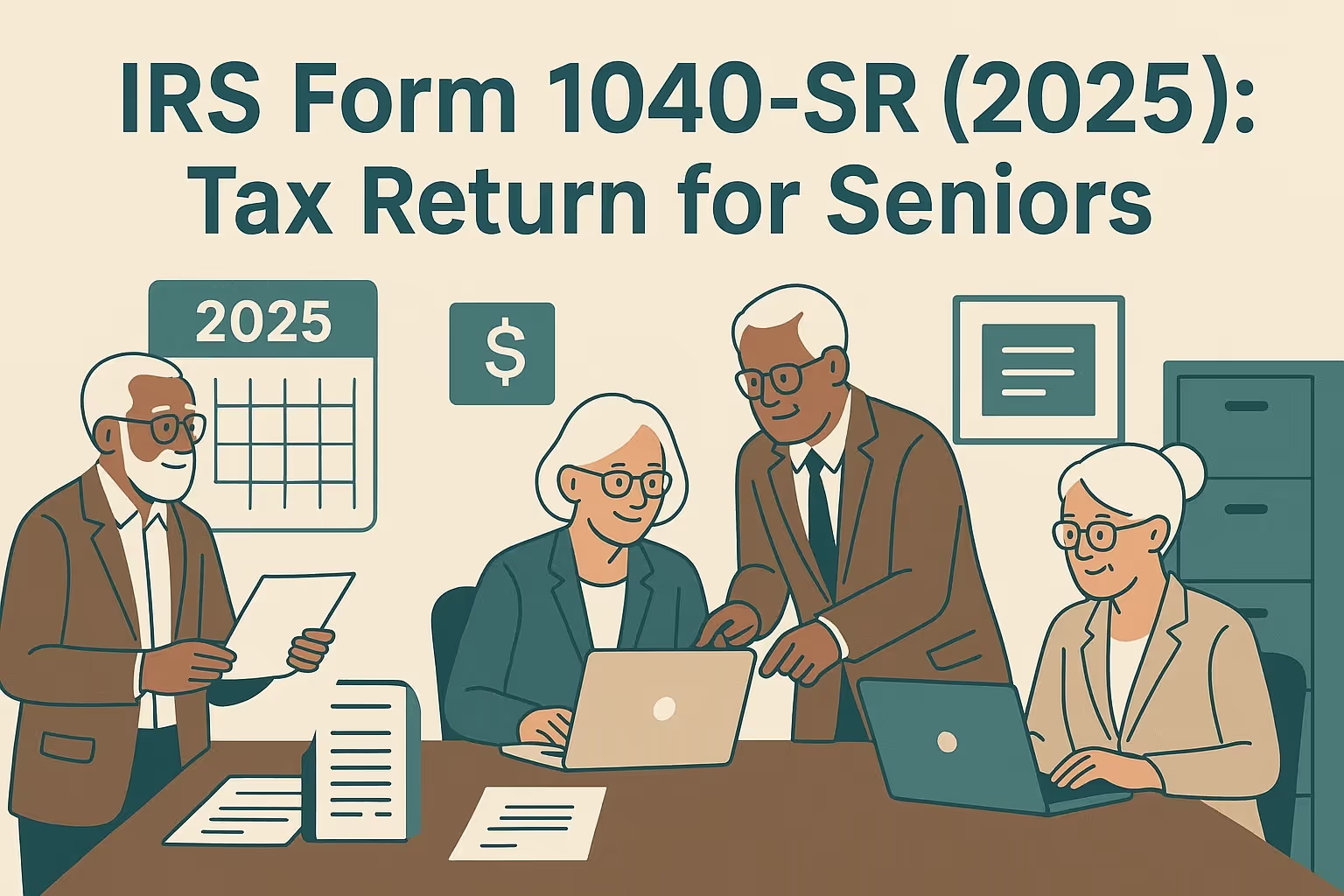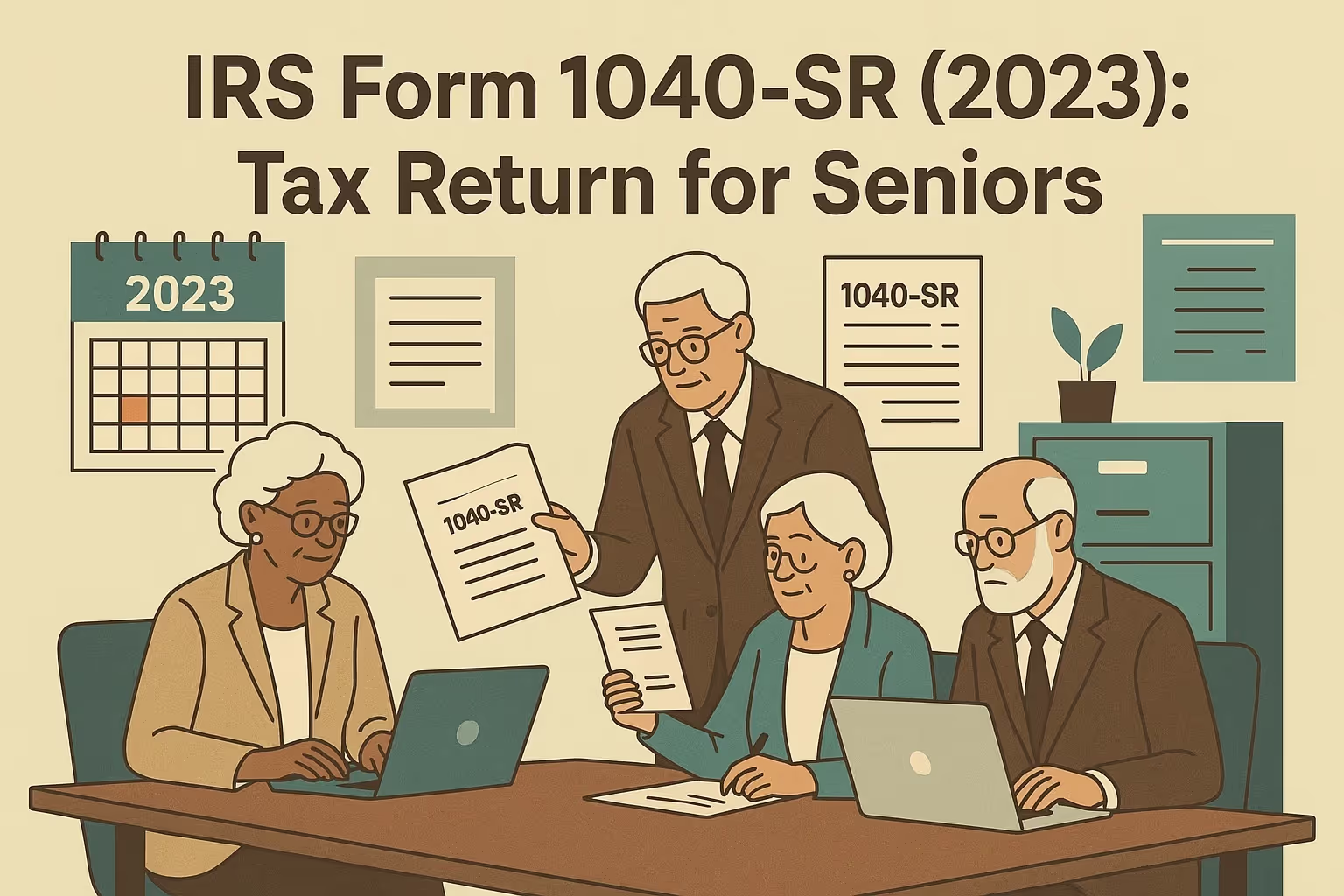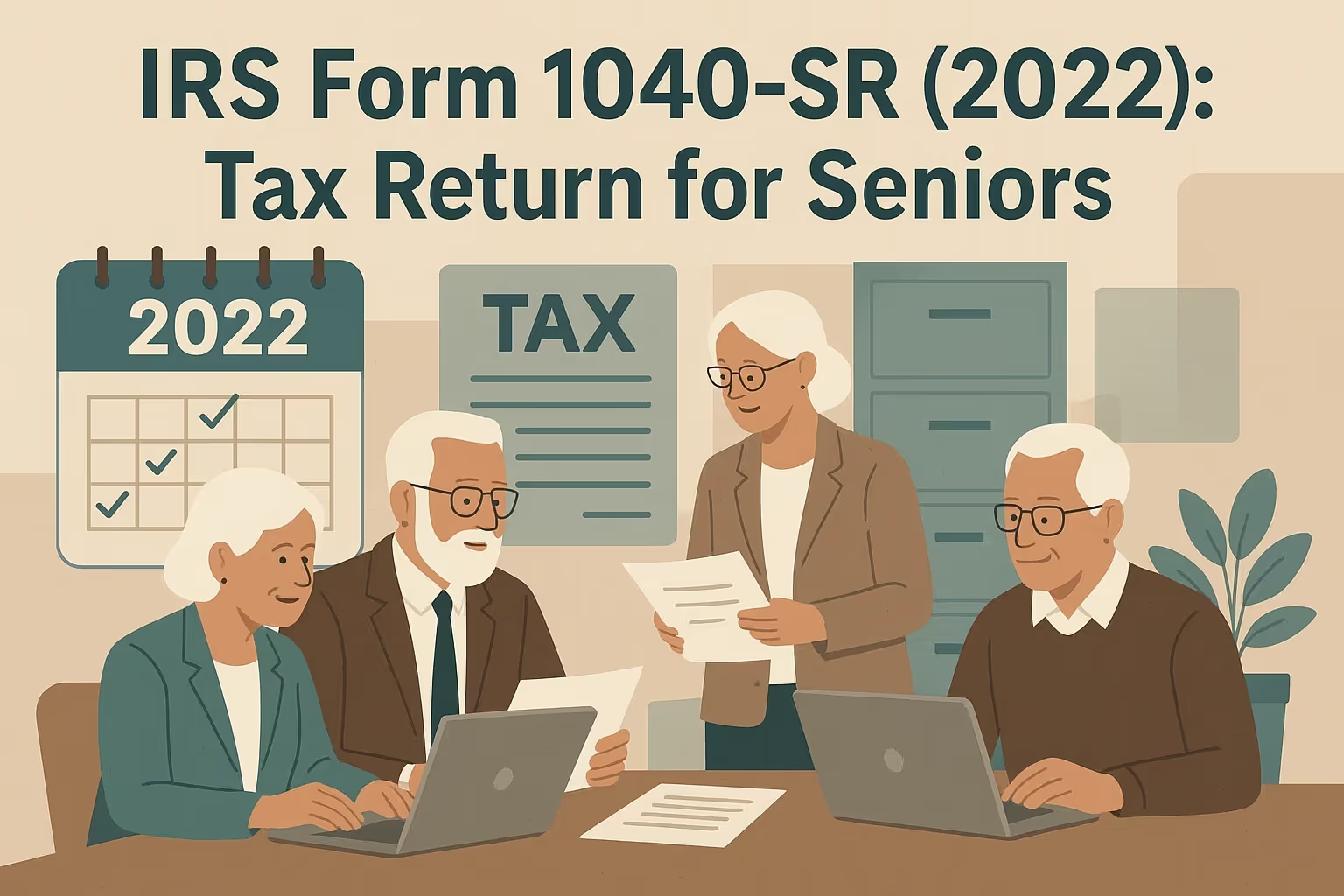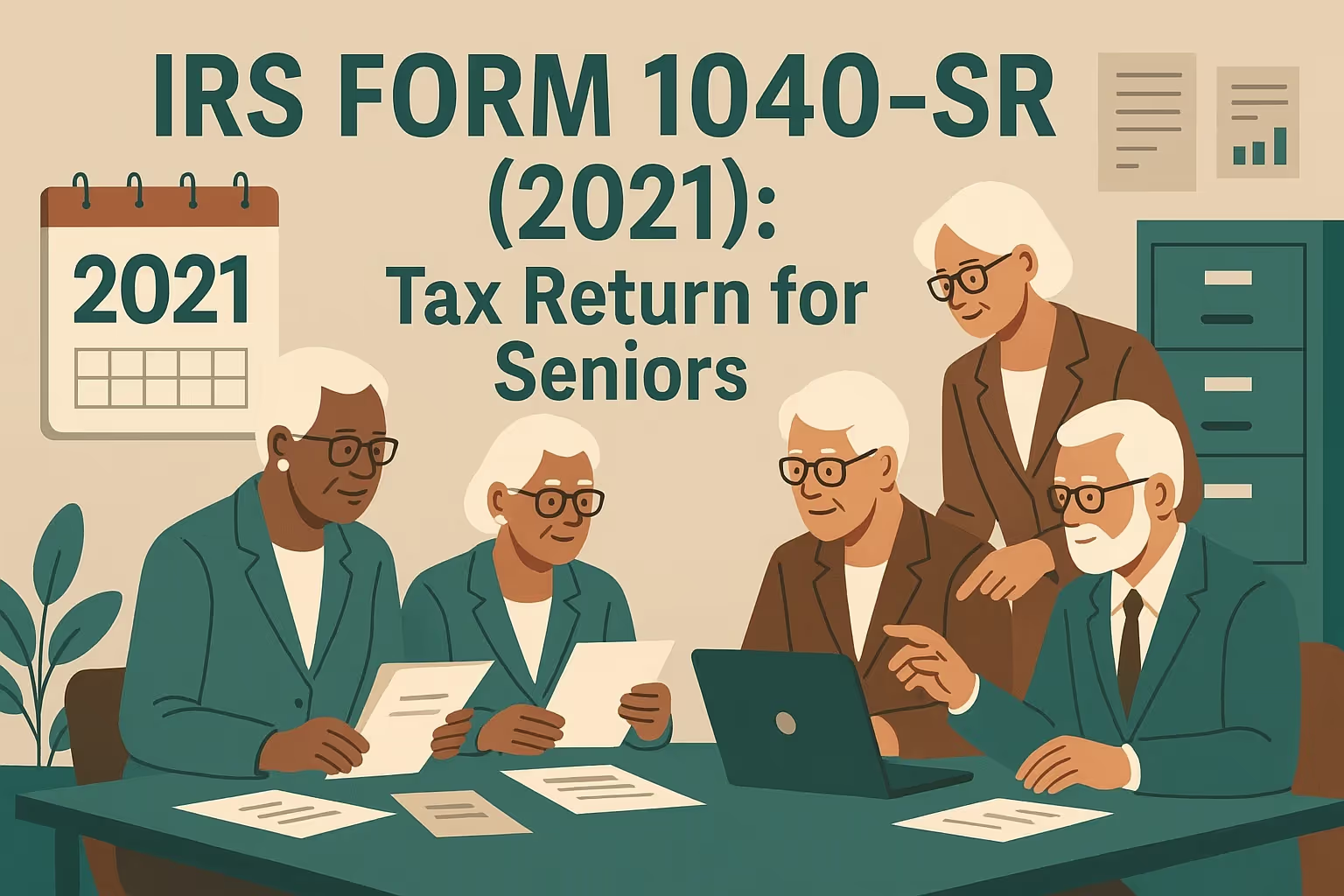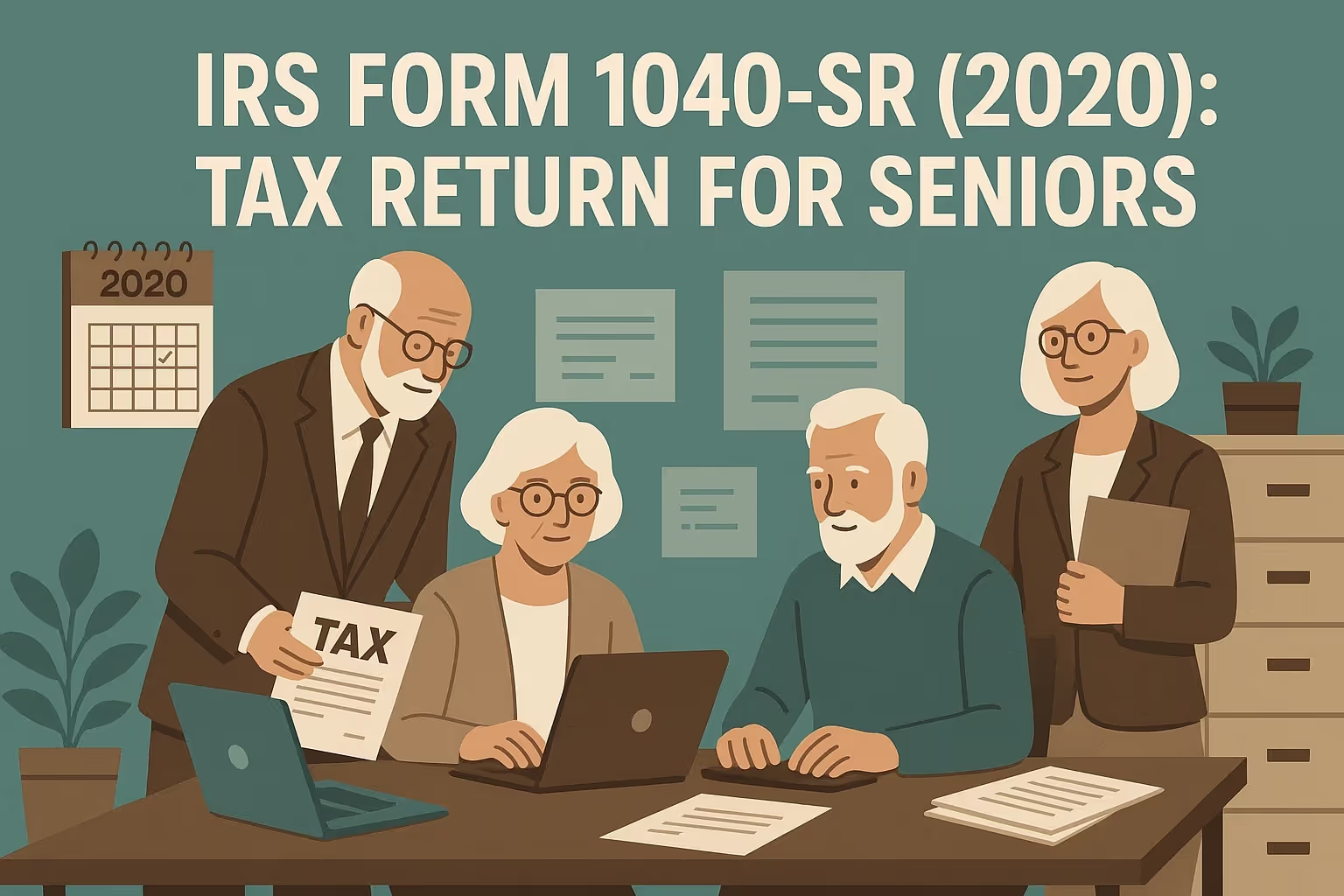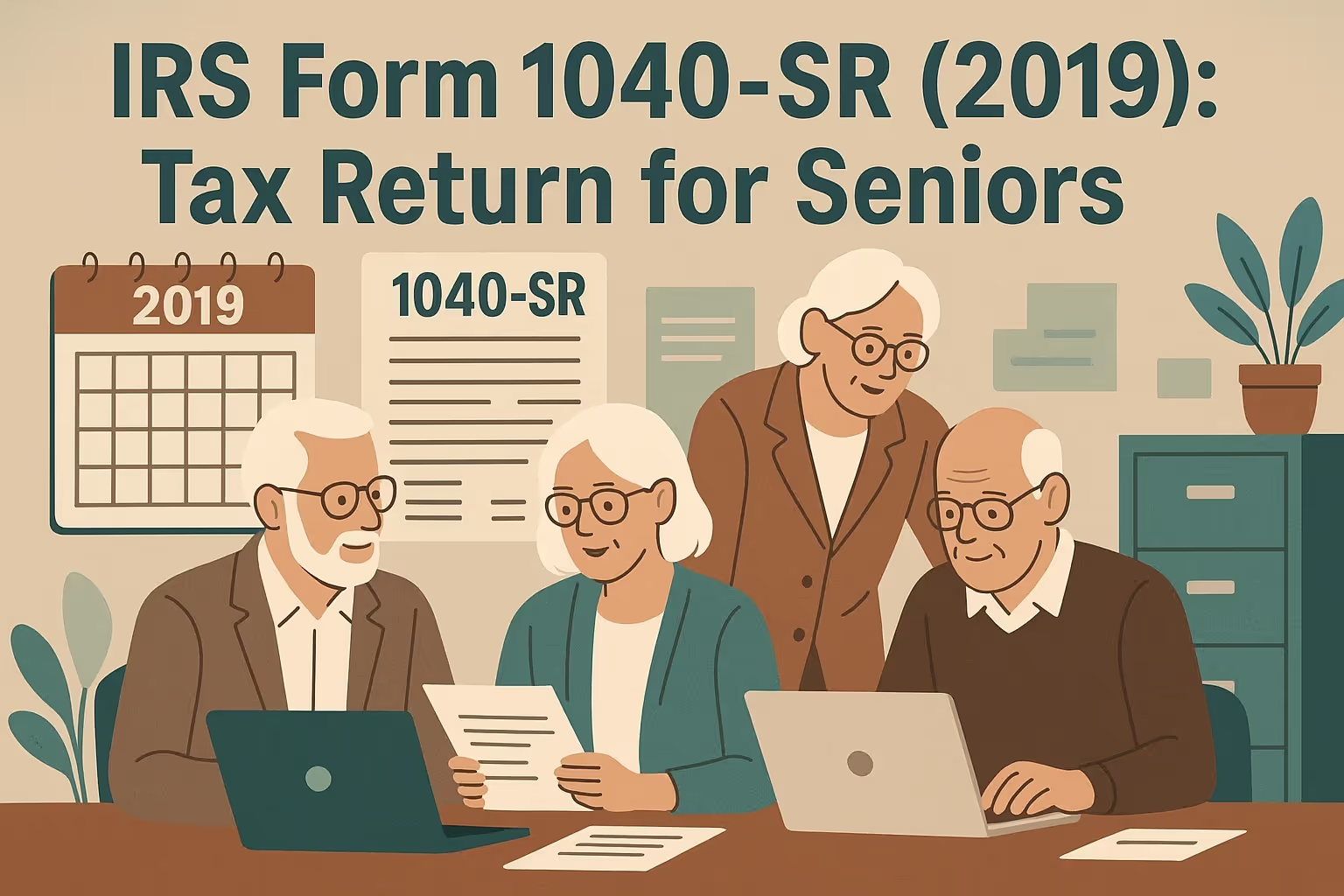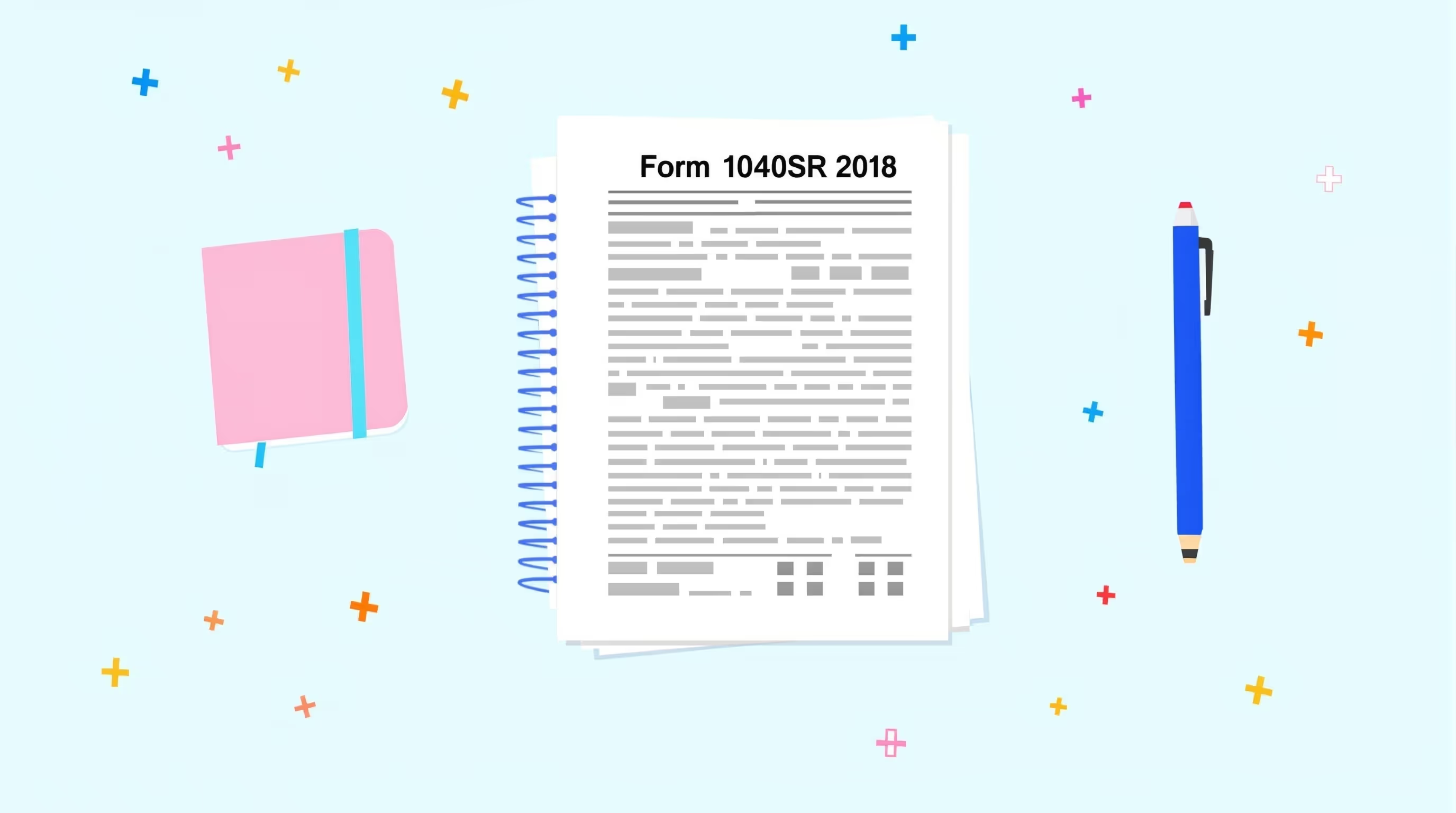IRS Form 1040-SR (2024): Tax Return for Seniors
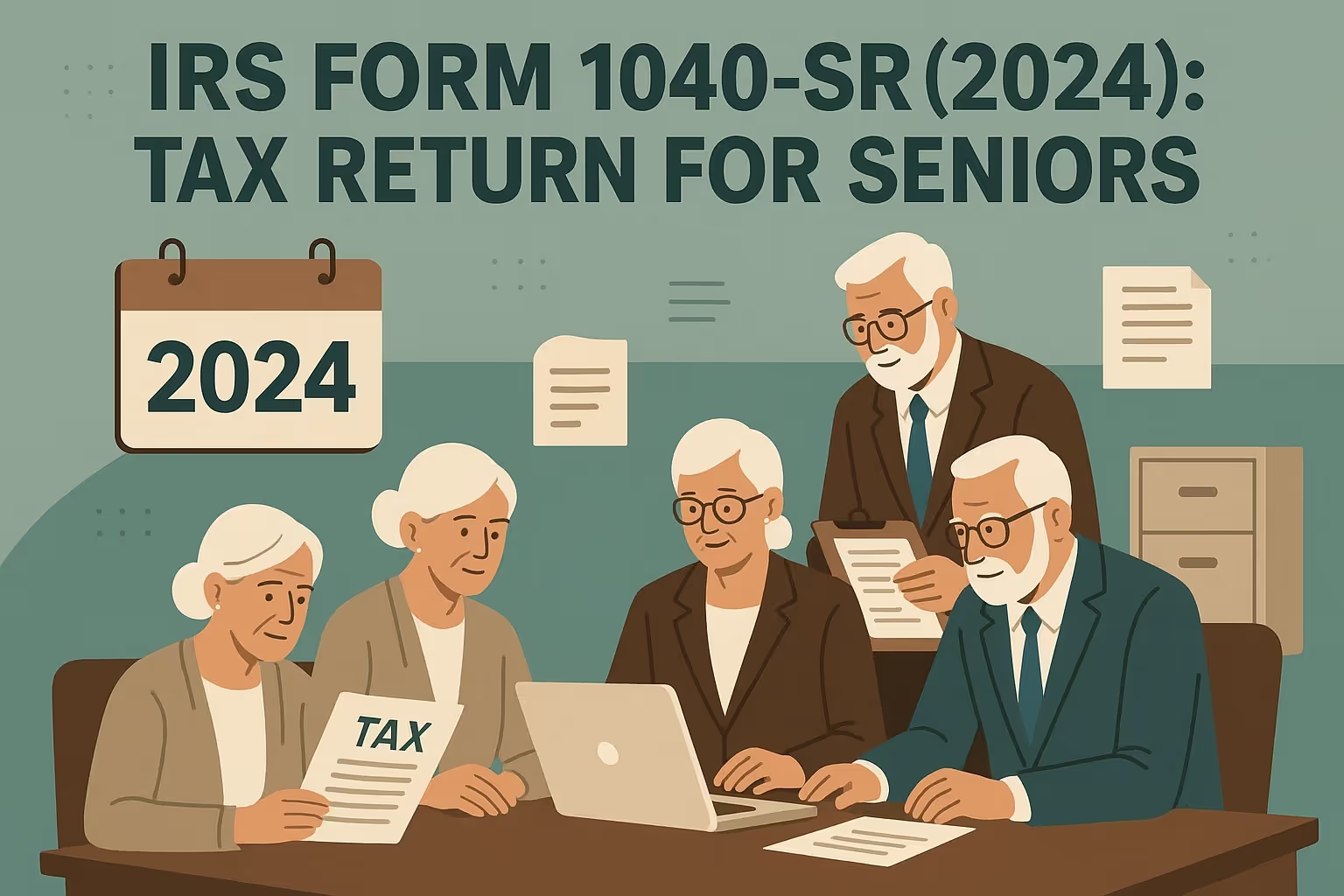
What IRS Form 1040-SR (2024) Is For
IRS Form 1040-SR (2024) is the federal income tax return designed for taxpayers born before January 2, 1960, or those who are 65 or older by the end of the tax year. It follows the same rules as Form 1040 but uses larger print, a more straightforward layout, and a clear standard deduction chart for older taxpayers who qualify.
This form helps seniors file their tax return accurately, even if they have multiple income sources such as retirement income, unemployment compensation, or self-employment income. It’s a simplified version of the regular income tax return that still meets all federal requirements for reporting income, deductions, and tax payments.
For a full overview of the senior tax return format, you can review our guide to the Form 1040-SR U.S. Tax Return for Seniors.
When You’d Use Form 1040-SR for 2024 (Late or Amended Filing)
Form 1040-SR (2024) can be used for late filing, amended filing, or to fix errors from previous returns. Many taxpayers file late after the April 15, 2025, due date because they missed the paperwork, received an IRS notice such as CP-59, CP-501, or CP-503, or discovered they are eligible for a tax refund or additional tax credits.
Refund claims must be submitted by April 15, 2028. After that date, the IRS determines that refund eligibility has expired. If you owe income taxes, the IRS charges interest and penalties on any unpaid tax until payment is made. Filing late can result in late filing fees, late payment fees, and additional interest charges and penalties.
Our Form 1040 Individual Income Tax Return guide explains the standard form that all taxpayers may use. If you also have one or more previous years that were never filed, our guide on unfiled federal income tax returns from 2010 to 2024 explains how the IRS handles older returns and what steps to take when catching up.
Key Rules Specific to 2024
- Increased deductions: Standard deduction amounts have risen to $16,550 for single filers 65 or older, $30,750 for married couples filing jointly with one spouse 65 or older, and $32,300 when both spouses are 65 or older.
- Minimum penalty: The minimum penalty for returns filed after December 31, 2024, is $510, applying to late submissions regardless of the amount owed.
- Late filing penalty: The IRS applies a 5% monthly penalty on unpaid taxes, up to a maximum of 25% of the total balance due.
- Late payment penalty: A separate penalty of 0.5% per month is added to unpaid balances until full payment is made.
- Interest charges: The IRS charges daily interest on overdue taxes, and this continues to accrue until the balance is paid in full.
- Refund deadline: All refund claims for 2024 returns must be filed by April 15, 2028, to remain valid under the three-year statute of limitations.
Step-by-Step (High Level)
- Gather documents: Collect W-2s, 1099s, and records of any additional income such as self-employment tax, student loan interest, or unemployment compensation.
- Confirm records: Obtain tax transcripts from IRS.gov or call 800-908-9946 to verify income and payments reported to the IRS.
- Prepare the form: Use the correct tax year 2024 version of IRS Form 1040-SR and report all income accurately.
- Include deductions and credits: Claim refundable credits, the earned income tax credit, or the child tax credit if you qualify.
- Attach schedules: Add Schedules 1, 2, and 3 if you have additional income or deductions to report.
- File the return: Choose electronic filing through free tax filing software, or mail your complete return to the proper IRS address for 2024.
- Make a tax payment: If you owe money, pay online at IRS.gov/payments using your bank account or set up a payment plan. The IRS offers flexible options based on your financial situation.
- Keep proof: Retain all copies, receipts, and proof of mailing. When filing online, ensure you see the locked padlock icon indicating a secure submission.
If you are unsure which schedules or attachments apply to your situation, visit our IRS Form Help Center for clear explanations of commonly required IRS forms.
Common Mistakes and How to Avoid Them
- Using the wrong form: Always use the correct Form 1040-SR for the 2024 tax year.
- Forgetting estimated tax payments: Keep a record of all quarterly payments and enter each amount on your return to avoid balance errors.
- Overlooking deductions and credits: Check all available tax credits before filing.
- Ignoring income sources: Include all self-employment income and unemployment compensation.
- Sending to the wrong address: Verify the correct IRS or state processing center before mailing your return to avoid refund delays.
- Ignoring penalties: Review the rules for late filing and late payment so you understand how penalties and interest may affect your balance.
Taxpayers who cannot pay their balance in full may qualify for an installment agreement. You can explore your options in our detailed guide to IRS payment plans.
What Happens After You File
After you file your tax return, IRS processing typically takes 3–4 weeks for electronic submissions and 6–16 weeks for paper filings. If you’re due a tax refund, it will be sent to your bank account or mailed as a check. If you owe money, the IRS charges interest and may add additional penalties until the tax bill is paid in full.
Taxpayers unable to pay in full can request a payment plan or apply for an extension. The IRS offers installment agreements that allow monthly payments based on your income. Filing on time still helps you avoid the larger failure-to-file penalty.
Working with a qualified tax preparer, tax professional, or tax counseling service can help ensure your complete return is accurate and that you meet all requirements.
FAQs
How much are IRS penalties for 2024 returns?
The IRS charges a late filing penalty of 5% of the unpaid taxes per month, up to a maximum of 25% of the unpaid taxes. The late payment penalty adds 0.5% per month, and the minimum penalty for 2024 returns is $510. The IRS charges interest daily on any unpaid tax until the full amount is paid.
Can I still receive a tax refund if I file my taxes late?
Yes, filing late does not cancel your right to a refund if you are owed money. However, you must file your return by April 15, 2028, to be eligible to claim it. After that deadline, the IRS determines the refund is no longer available.
What if I can’t pay my tax bill in full?
File your tax return on time, even if you can’t pay in full. You can apply for a payment plan at IRS.gov/payments, pay directly from your bank account, or request an extension. The IRS offers options to help affected taxpayers manage unpaid balances.
Can I e-file a 2024 return in 2025 or a later year?
E-filing is available for a limited time after the deadline has passed. If electronic filing closes, you’ll need to print and mail your Form 1040-SR or Form 1040 to the IRS. Certified mail provides proof of timely filing if required.
What credits can seniors claim?
Depending on your income, you may qualify for tax credits such as the earned income tax credit, child tax credit, or other refundable credits. Each credit has specific requirements, and the IRS determines eligibility based on the details of your particular tax year.
















